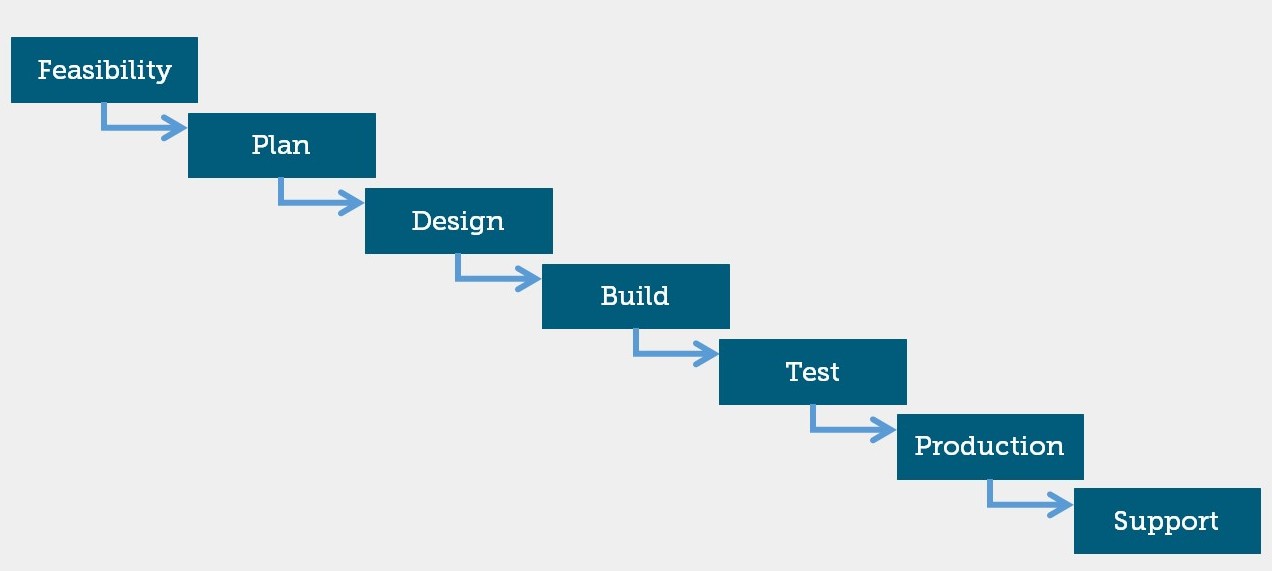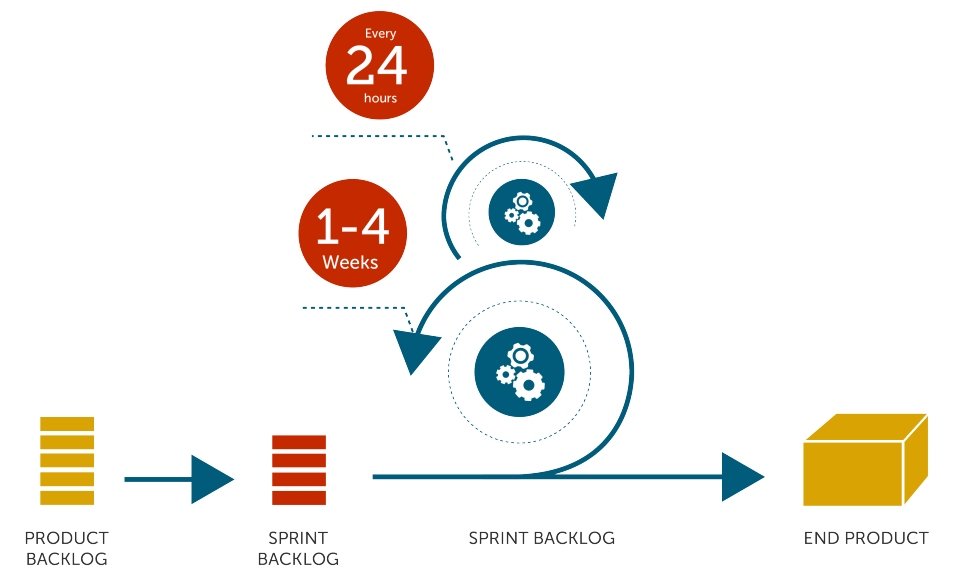Agile vs Waterfall: Comparing project management methods
Traditional waterfall methods for developing software are rapidly declining in popularity as more recently developed Agile methodologies are increasingly adopted. But what’s the difference between the two – and is Agile always better?
What is waterfall?
The waterfall model is one in which each phase of a product’s life cycle takes place in sequence, so that progress flows steadily downwards through these phases like a waterfall.

As this process is sequential, once a step has been completed, developers can’t go back to a previous step – not without scratching the whole project and starting from the beginning. There’s no room for change or error, so a project outcome and an extensive plan must be set in the beginning and then followed carefully.
In waterfall methodologies all the requirements gathering and design work is done before any coding takes place.
Advantages of the Waterfall Methodology :
- The waterfall methodology stresses meticulous record keeping. Having such records allows for the ability to improve upon the existing program in the future.
- With the waterfall methodology, the client knows what to expect. They’ll have an idea of the size, cost, and timeline for the project. They’ll have a definite idea of what their program will do in the end.
- In the case of employee turnover, waterfall’s strong documentation allows for minimal project impact.
Disadvantages of the Waterfall Methodology :
- Once a step has been completed, developers can’t go back to a previous stage and make changes.
- Waterfall methodology relies heavily on initial requirements. However, if these requirements are faulty in any manner, the project is doomed.
- If a requirement error is found, or a change needs to be made, the project has to start from the beginning with all new code.
- The whole product is only tested at the end. If bugs are written early, but discovered late, their existence may have affected how other code was written.
When should you use waterfall methodology?
- When there is a clear picture of what the final product should be.
- When clients won’t have the ability to change the scope of the project once it has begun.
- When definition, not speed, is key to success.
What is agile?
Agile came about as a “solution” to the disadvantages of the waterfall methodology. Instead of a sequential design process, the Agile methodology follows an incremental approach.
An Agile software development methodology – such as Scrum – is one which eschews a linear, sequential approach in favour of an incremental, iterative one.

Instead of extensive planning and design up front, Agile methodologies allow for changing requirements over time by using cross-functional teams – incorporating planners, designers, developers and testers – which work on successive iterations of the product over fixed time periods (timeboxes). The work is organised in to a backlog that is prioritised in to exact priority order based on business (or user) value.
Advantages of the Agile Methodology :
- The Agile methodology allows for changes to be made after the initial planning. Re-writes to the the program, as the client decides to make changes, are expected.
- Because the Agile methodology allows you to make changes, it’s easier to add features that will keep you up to date with the latest developments in your industry.
- At the end of each sprint, project priorities are evaluated. This allows clients to add their feedback so that they ultimately get the product they desire.
- The testing at the end of each sprint ensures that the bugs are caught and taken care of in the development cycle. They won’t be found at the end.
- Because the products are tested so thoroughly with Agile, the product could be launched at the end of any cycle. As a result, it’s more likely to reach its launch date.
Disadvantages of Agile Methodology :
- With a less successful project manager, the project can become a series of code sprints. If this happens, the project is likely to come in late and over budget.
- As the initial project doesn’t have a definitive plan, the final product can be grossly different than what was initially intended.
When should you use Agile methodology?
- When rapid production is more important than the quality of the product.
- When clients will be able to change the scope of the project.
- When there isn’t a clear picture of what the final product should look like.
- When you have skilled developers who are adaptable and able to think independently.
- When the product is intended for an industry with rapidly changing standards..
Both the Agile and waterfall methodologies have their strengths and weaknesses. The key to deciding which is right for you comes down to the context of the project. Is it going to be changing rapidly? If so, choose Agile. Do you know exactly what you need? Good. Then maybe waterfall is the better option. Or better yet? Consider taking aspects of both methodologies and combining them in order to make the best possible software development process for your project.